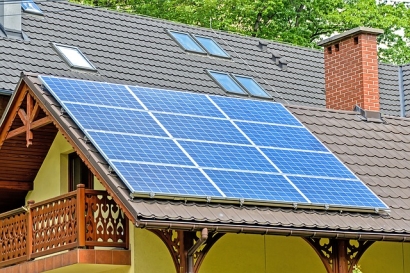
The electric power sector is responsible for one quarter of all greenhouse gas emissions in the U.S. Using solar panels to generate all or part of your power needs would not only save your wallet, but it could help save the planet. Here are some steps you can take before making the switch.
Even though you might want to transition to solar as fast as possible, you shouldn’t rush the process. You’ll want to do a fair amount of research and adequately prepare your home. Use this handy list to help you get ready.
Unless you have roofing or contracting experience, you’ll probably want to hire a professional to inspect your roof. They can also help you determine how many panels you’ll need and if your roof is large enough. Size may affect how much of your energy bill you offset with solar power.
Depending on what your inspector finds, you may also need to have work done on your roof to ensure it can bear the extra weight of your panels — most should have sufficient stability already, but it’s best to check. You’ll also want to complete any necessary roofing repairs before the solar panels go up so you won’t have to move them during their lifespan to do roof maintenance.
To get the most out of your panels, you’ll want to position them south or southwest. In addition to angling the right direction, your roof’s pitch is also crucial. Flat roofs need extra equipment to achieve the correct angle and the more extreme slopes might make solar panels a non-option.
With solar power’s rise in popularity and availability to the public, the number of solar power manufacturers and contractors has also increased. Depending on where you live, you may have several options to choose from. Spend some time researching each manufacturer’s panels — read reviews and ask for recommendations.
Do the same process when selecting a contractor. You need someone with plenty of solar panel experience so they know the best methods and are familiar with local and state regulations and permitting requirements. The right contractor can take you through the entire process with minimal hassle.
Deciding between a meter or battery comes down to budget and your intention for the excess power your panels generate. The cheaper alternative is to allow the utility company to install a production meter. They’ll monitor your consumption versus the energy the panels create and debit or credit you for the difference.
The alternative is to pay the added cost of a large battery, which would need its own storage area. A battery allows you to store extra energy on days or weeks when you don’t create as much electricity, saving all the power for yourself instead of sharing it with the grid. This option gives you more control but at a much higher price tag.
One of the more difficult decisions is whether to lease or buy your solar panels. Leasing is an excellent option if you’d prefer to pay in monthly installments, but you won’t own the panels until you finish paying or buy them out. Additionally, if you move before finishing your lease, you’ll have to transfer the contract to the new owners.
On the other hand, buying the panels gives you complete ownership. If you can generate enough power for your needs, you essentially bring your electric bill to zero. You also may be able to sell excess energy back to the utility company. However, buying them outright does come with a heftier price tag than a lease.
If you want to move forward with buying your solar panels, you’ll likely need some financing. Luckily, the Federal Solar Tax Credit gives homeowners a tax break for a percentage of the purchase price for the next couple of years.
Before the end of 2022, you can get 26% — the number drops to 22% in 2023 and is no longer available after that. However, you may still be eligible for rebates and perks at the state, local or utility company level.
Tax credit aside, you’ll still need to come up with a large sum of money to pay upfront. Your options are a personal loan, home equity loan, financing through your contractor or a government loan program. Weigh the pros and cons of each option to determine what’s suitable for your needs. The most cost-effective option is to pay in cash, but it’s likely not possible unless you have some money saved up.
Once you decide to get solar panels, take your time with each decision. There’s a lot to consider before your final commitment and you don’t want any regrets. You’ll also need the time to apply for permits, so there’s no way to rush the process. Do plenty of research so you can feel confident every step of the way.

